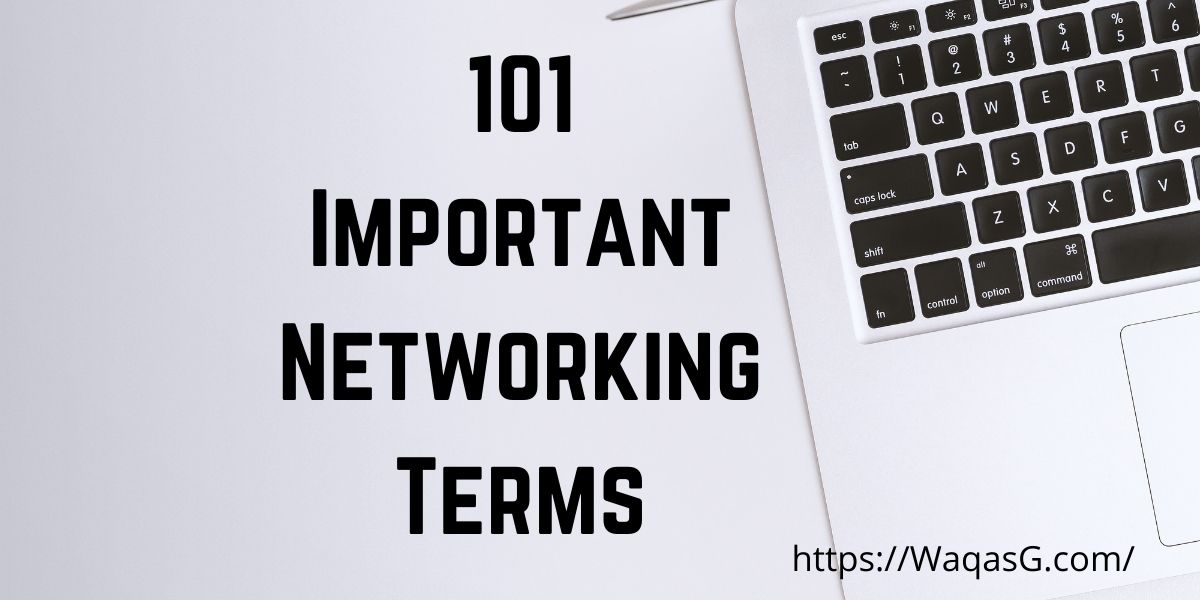In this article, I will give you the overview of the Networking terms frequently used in computer science.

ASCII
ASCII, abbreviated from American Standard Code for Information Interchange, is a character encoding standard for electronic communication. These codes represent text in computers, and other electronic devices.
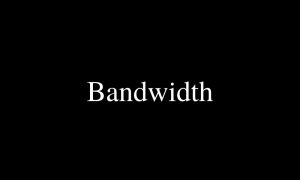
Bandwidth
Bandwidth is the maximum data transfer rate of a network which measures how much data can be sent over a specific connection in a given amount of time.
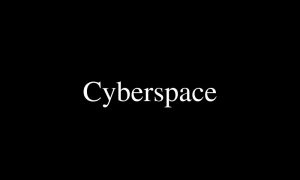
Cyberspace
Cyberspace is a concept describing a widespread, interconnected digital technology.

Cookie
Cookies are text files with small pieces of data that are used to identify your computer. Normally, cookie is created by the server upon your connection.

Client
A client is a piece of computer hardware that accesses a service made available by a server.

Download
The process of transferring information from a web site to the computer.
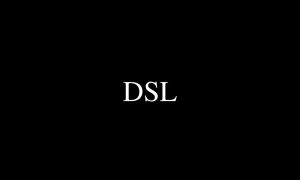
DSL
Digital subscriber line or DSL are used to transmit digital data over telephone lines. A DSL can be symmetric ar a-symmetric.

Domain Name
The domain name appears in URLs to identify web pages or in email addresses. For example, waqasg.com

FTP
The File Transfer Protocol is a standard network protocol used for the transfer of computer files between a client and server on a computer network.

Firewall
A firewall is a network security system that monitors and controls incoming and outgoing network traffic.

Electronic mail is a method of exchanging messages between people using electronic devices. Emails, messages, memos or letters, sent electronically between networked computers.

Home Page
A home page is the main web page of a website.
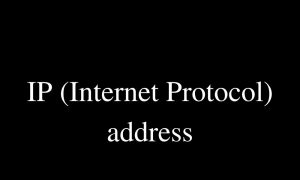
Internet Protocol (IP)
The Internet Protocol is the principal communications protocol in the Internet protocol suite for relaying datagrams across network boundaries. Its routing function enables internetworking, and essentially establishes the Internet.
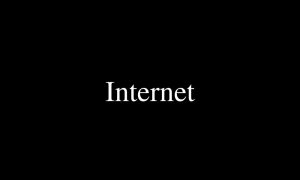
Internet
The Internet (or internet) is the global system of interconnected computer networks that uses the Internet protocol suite (TCP/IP) to communicate between networks and devices.

Modem
A device that connects two computers together over a telephone or cable line by converting the computer’s data into an audio signal. Modem is a contraction for the process it performs : modulate-demodulate.
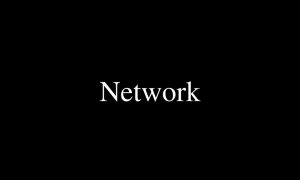
Network
A computer network is a group of computers that use a set of common communication protocols over digital interconnections for the purpose of sharing resources located on or provided by the network nodes.

Hyperlink
A hyperlink, or simply a link, is a reference to data that the user can follow by clicking or tapping. A hyperlink points to a whole document or to a specific element within a document. Hypertext is text with hyperlinks. The text that is linked from is called anchor text.

HTTPS
Hypertext Transfer Protocol Secure is an extension of the Hypertext Transfer Protocol. It is used for secure communication over a computer network, and is widely used on the Internet. In HTTPS, the communication protocol is encrypted using Transport Layer Security or, formerly, Secure Sockets Layer.

HTTP
The Hypertext Transfer Protocol is an application layer protocol for distributed, collaborative, hypermedia information systems.

HTML
Hypertext Markup Language is the standard markup language for documents designed to be displayed in a web browser. It can be assisted by technologies such as Cascading Style Sheets and scripting languages such as JavaScript.

Hypertext
Hypertext is text displayed on a computer display or other electronic devices with references to other text that the reader can immediately access. Hypertext documents are interconnected by hyperlinks, which are typically activated by a mouse click, keypress set or by touching the screen.

Instant Messaging (IM)
Instant messaging technology is a type of online chat that offers real-time text transmission over the Internet. A LAN messenger operates in a similar way over a local area network. Short messages are typically transmitted between two parties, when each user chooses to complete a thought and select “send”.
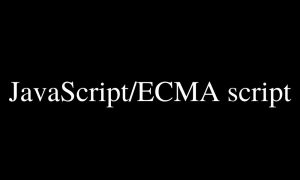
JavaScript / ECMA Script
A programming language used almost exclusively to manipulate content on a web page.
JavaScript, often abbreviated as JS, is a programming language that conforms to the ECMAScript specification. JavaScript is high-level, often just-in-time compiled, and multi-paradigm. It has curly-bracket syntax, dynamic typing, prototype-based object-orientation, and first-class functions.
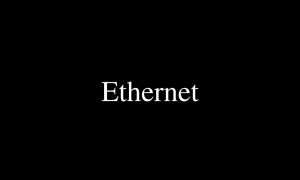
Ethernet
Ethernet is a family of computer networking technologies commonly used in local area networks, metropolitan area networks and wide area networks. It was commercially introduced in 1980 and first standardized in 1983 as IEEE 802.3.
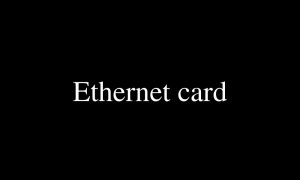
Ethernet Card
A network interface controller is a computer hardware component that connects a computer to a computer network. Early network interface controllers were commonly implemented on expansion cards that plugged into a computer bus.
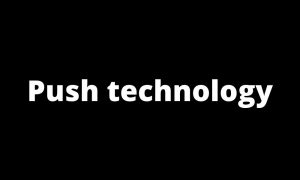 Push Technology
Push Technology
Push technology, or server push, is a style of Internet-based communication where the request for a given transaction is initiated by the publisher or central server. It is contrasted with pull/get, where the request for the transmission of information is initiated by the receiver or client.

Upload
The process of transferring information from a computer to a web site.
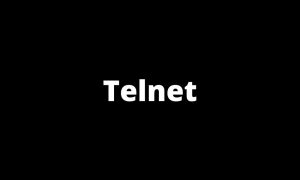
Telnet
Telnet is an application protocol used on the Internet or local area network to provide a bidirectional interactive text-oriented communication facility using a virtual terminal connection.
A way to communicate with a remote computer over a network.
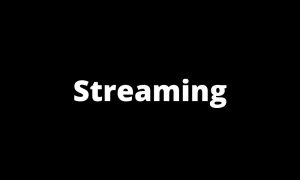
Streaming
Streaming media is multimedia that is constantly received by and presented to an end-user while being delivered by a provider. The verb to stream refers to the process of delivering or obtaining media in this manner. Streaming refers to the delivery method of the medium, rather than the medium itself.

Spider
A process search engine use to investigate new pages on a web site and collect the information that needs to be put in their indices.
A Web crawler, sometimes called a spider or spiderbot and often shortened to crawler, is an Internet bot that systematically browses the World Wide Web, typically for the purpose of Web indexing

Server
A computer that shares its resources and information with other computers, called clients, on a network.

Search Engine
A search engine is a software system that is designed to carry out web searches, which means to search the World Wide Web in a systematic way for particular information specified in a textual web search query.

URL
A Uniform Resource Locator, colloquially termed a web address, is a reference to a web resource that specifies its location on a computer network and a mechanism for retrieving it. A URL is a specific type of Uniform Resource Identifier, although many people use the two terms interchangeably.

Worm
A computer worm is a standalone malware computer program that replicates itself in order to spread to other computers. It often uses a computer network to spread itself, relying on security failures on the target computer to access it. It will use this machine as a host to scan and infect other computers.
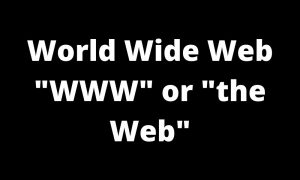
World Wide Web
The World Wide Web, commonly known as the Web, is an information system where documents and other web resources are identified by Uniform Resource Locators, which may be interlinked by hypertext, and are accessible over the Internet.
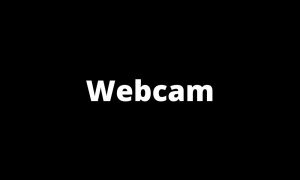
Webcam
A webcam is a video camera that feeds or streams an image or video in real time to or through a computer to a computer network, such as the Internet. Webcams are typically small cameras that sit on a desk, attach to a user’s monitor, or are built into the hardware.
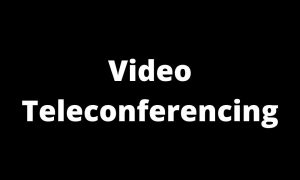
Vide Teleconferencing
Videotelephony comprises the technologies for the reception and transmission of audio-video signals by users at different locations, for communication between people in real time. A videophone is a telephone with a video display, capable of simultaneous video and audio for communication between people in real time.

USENET
Usenet is a worldwide distributed discussion system available on computers. It was developed from the general-purpose Unix-to-Unix Copy dial-up network architecture. Tom Truscott and Jim Ellis conceived the idea in 1979, and it was established in 1980.

Surfing
Alternatively referred to as web surfing, surfing describes the act of browsing the Internet by going from one web page to another web page using hyperlinks in an Internet browser. The term “surfing” was first coined by Mark McCahill.
